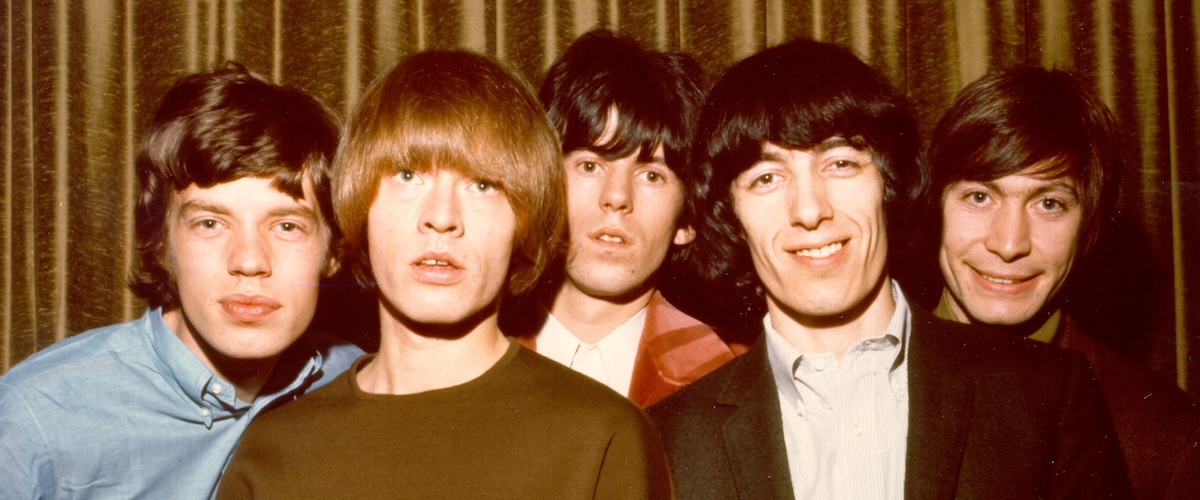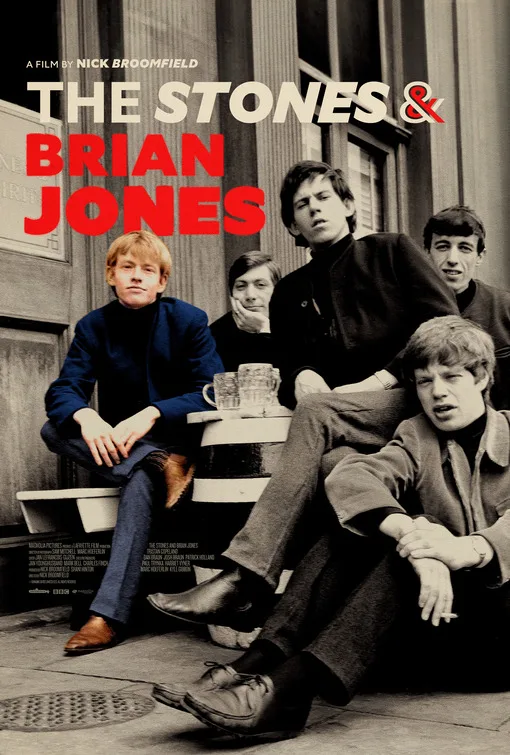Like many another music-crazed kid who witnessed The Beatles’ epochal arrival in early 1964, I was fascinated by the influx of bands—dubbed the British Invasion—that followed in their wake. Though the Rolling Stones proved to be the most durable of these, their eventual dominance wasn’t apparent then. At first glance, they were mainly notable for how they looked. While Gerry and the Pacemakers, the Animals, Herman’s Hermits, and the rest of the gang aped the Fab Four by dressing in suits and ties, the Stones had a scruffy-chic look that announced their proclivity for breaking the rules early on. But most striking about those early photos was the look of one member.
Brian Jones had The Hair. Of course, long hair was de rigueur for all aspiring rock ’n’ rollers at that time, but Jones’ coif stood out. It was like a sleek blond helmet immaculately conceived and maintained. In group photos, where he never smiled, his pallid, handsome face combined with The Hair for an image that seemed to embody the sexiness and daring of the new pop culture. Thanks in large part to that image, it seems, Jones dominated the early public perception of the Stones: he received far more fan mail than other members (and answered much of it personally) and elicited more screams in concerts.
That dominance didn’t last long. Jones, a middle-class kid and blues fanatic like his fellows, formed the band and gave it its Muddy Waters-derived name in 1962. By ’63, they were making records, getting media attention, and garnering fans. Soon enough, though, everyone’s focus shifted away from Jones toward Mick Jagger and Keith Richards. As Nick Broomfield’s doc “The Stones and Brian Jones” tells it, the group’s early manager and producer, Andrew Loog Oldham, pushed the singer and guitarist to write songs—which they did with mounting brilliance for the next decade and beyond—and simultaneously worked to keep Jagger and Richards in the media spotlight and the other members out. In the film, there’s an old news clip where an interviewer keeps asking Jones about writing the band’s songs, and Jones, with evident chagrin, points him toward Jagger and Richards.
The rest of the story is a well-known downward spiral. Jones grew increasingly rich and famous as a Stone but increasingly miserable for being marginalized by his fellows. His drug use didn’t help. By ’68, he was a blighted wreck. In mid-1969, he was fired from the Stones and three weeks later was found dead in the swimming pool of his home outside London.
Why tell this story again? I’m a fan of Broomfield’s documentaries, which include many musical subjects, and I know that he often has a personal angle on the stories he tells. In recounting the romance of Leonard Cohen and his muse Marianne, for example, he actually knew the protagonists and has the footage to prove it. With “The Stones and Brian Jones,” the personal connection is slighter. Broomfield recalls chatting with Jones on a train as a teenager; he found the musician open and friendly. What the filmmaker really has to offer here is a thesis: he thinks Jones’ rise and fall were essentially determined by his relationship with his parents.
They were typical bourgeois conformists who didn’t grasp that the times were indeed a-changin’. They wanted young Brian to succeed academically (the film includes some remarkable footage of him in grammar school) and get a conventional job. Seeing his artistic interests as silly distractions, they never attended any of his concerts and always regarded him as a failure, even as he was becoming wealthy. He reacted to their hostility by leaving home early and living with a succession of girlfriends (and, in many cases, their welcoming families); he left behind at least five illegitimate children.
Jones’ romantic peregrinations are, of course, a major strand in the story Broomfield tells, and there’s a remarkable consistency to the accounts he gets from several girlfriends. They recall him as sweet and a great lover if somewhat lost. There’s hardly a negative word from any of them. It’s said that he was drawn to girls who looked like him, meaning hair in bangs. The most notorious of these, actress Anita Pallenberg, was virtually his double but jilted him for Keith Richards when they were attending the Cannes Film Festival to promote a Volker Schlöndorff film that she starred in. That blow effectively amplified the sense that Keith and Mick were stealing everything of value from Brian and cared little about the effects on him.
Not surprisingly, Broomfield didn’t get interviews from Jagger or Richards. But the great one he got from original Stones bassist Bill Wyman is worth the price of admission. Wyman has long credited Jones with the band’s formation and generally defended him against the Jagger-Richards party line. Here, he is the one interviewee who speaks eloquently of Jones’ musical contributions to the early Stones records. Yet the way Broomfield presents this entails one of the lacunae that I found frustrating in the film. Jones started as a hardcore blues purist playing guitars and harmonica. How did he get from there to contributing instruments like sitars, mellotrons, and marimbas to songs including “Lady Jane,” “Paint It, Black,” and “Under My Thumb”?
Broomfield doesn’t delve into this evolution or how Jagger and Richards viewed its impact on their work, which it greatly enriched. (I’m sure I wasn’t the only early-Stones fan who missed Jones’ innovative embellishments when he was gone.) As for the media images of Jones’ work with the band, there are fewer than one might expect. Doubtless, budget constraints may have kept TV appearances on “The Ed Sullivan Show” and similar out of the film; Godard’s “Sympathy for the Devil (One Plus One)” (in which Jones’ isolation from the other Stones is strikingly conveyed) is likewise elided. But why is there no exploration of Brian Jones Presents the Pipes of Pan at Joujouka, his most acclaimed and innovative solo project?
In a sense, Jones’ musical talent and originality, as well as his status as a pioneer of world music, are alluded to more than seriously examined and appraised, and that must be counted as a lack in the film. (More forgivably, Broomfield doesn’t go into the theories that Jones was murdered by an angry worker on his property.) But Jones’ musical fate does tie into the filmmaker’s central thesis, which brings to mind a counterexample from the Stones’ greatest competitors. In The Beatles, George Harrison occupied a position similar to Jones’ in the Stones: he was overshadowed by a songwriting team that was one of the greats in rock ’n’ roll history. Harrison, though, persevered and eventually wrote songs that ranked among the band’s best. Could Brian Jones have done the same? Perhaps the only thing he lacked was the early confidence that Harrison got from a loving and supportive family.
In theaters and on VOD today.




















